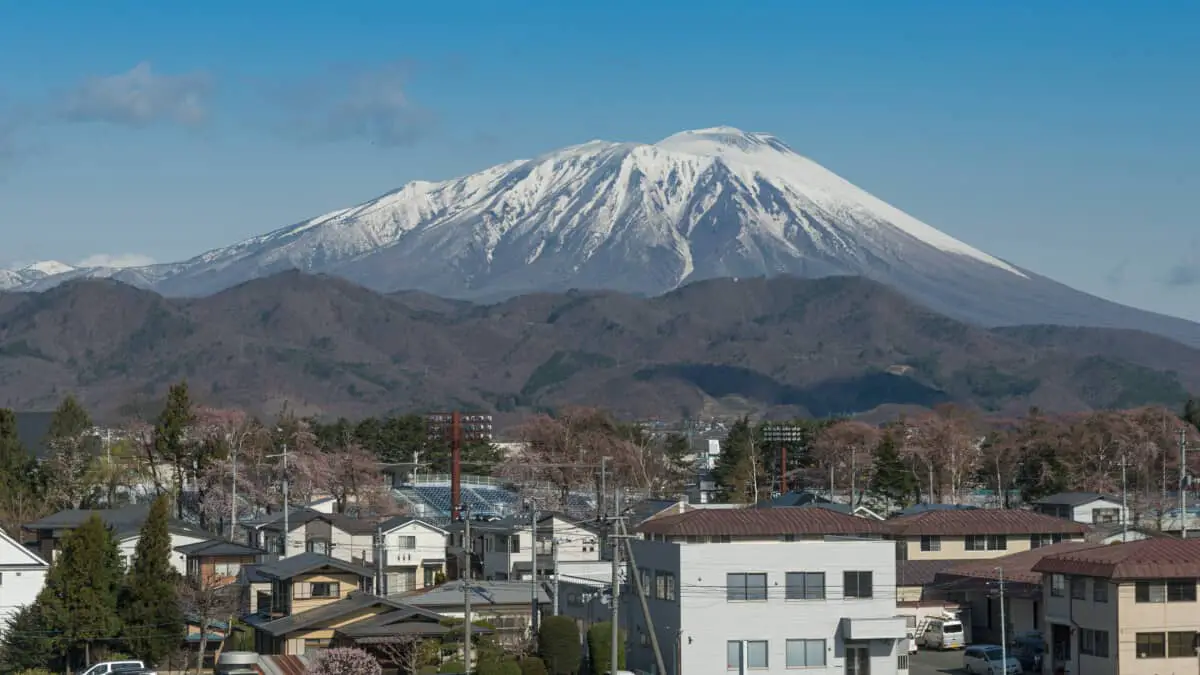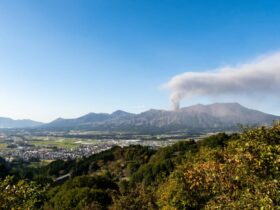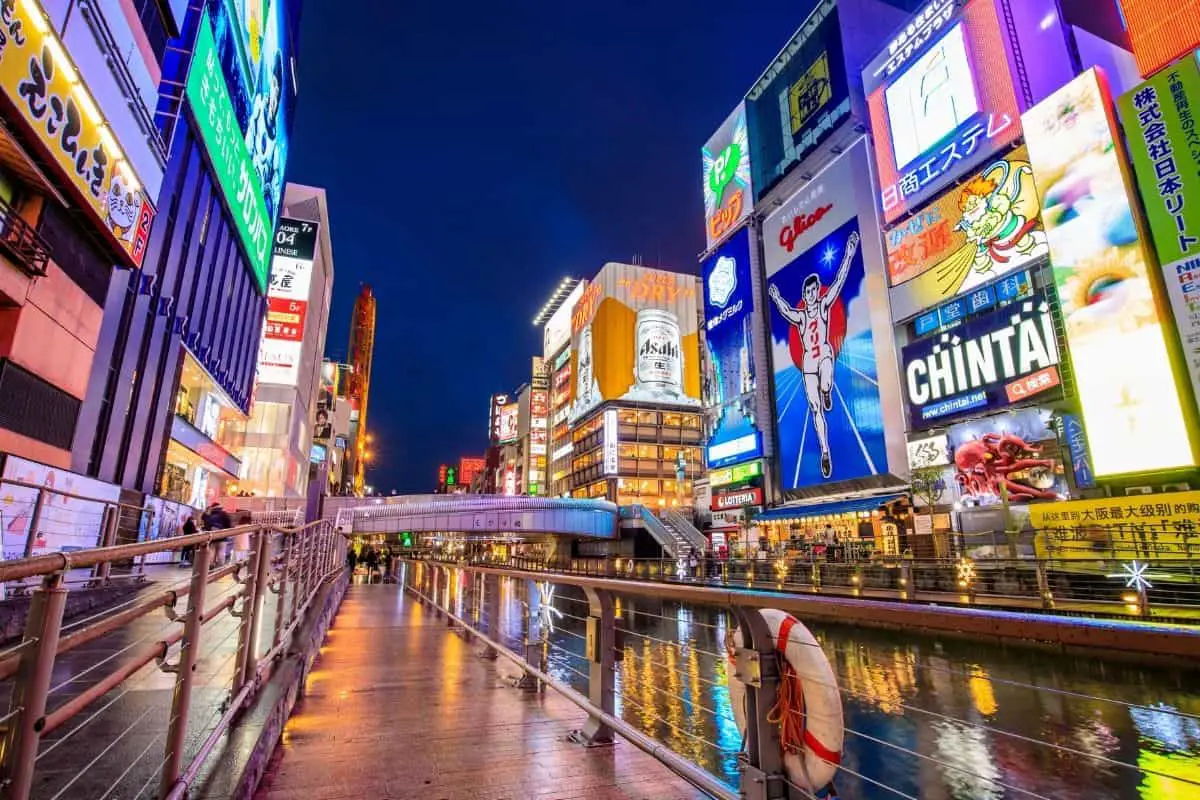For a true, rugged experience of Japan, Iwate Prefecture holds many mysteries. For centuries, the people there have had a unique form of nature worship combined with folk dances, seasonal festivals, and ancestral stories. Plus, it’s this area that supplies a great portion of the country’s produce and seafood.
Iwate is a magical place with blessings and wonder at every turn. It’s truly something to experience that will absolutely take your breath away.
The whole region features majestic cliffs jutting above the ocean and mountain ranges that get as tall as 6686 feet (mount Iwate).
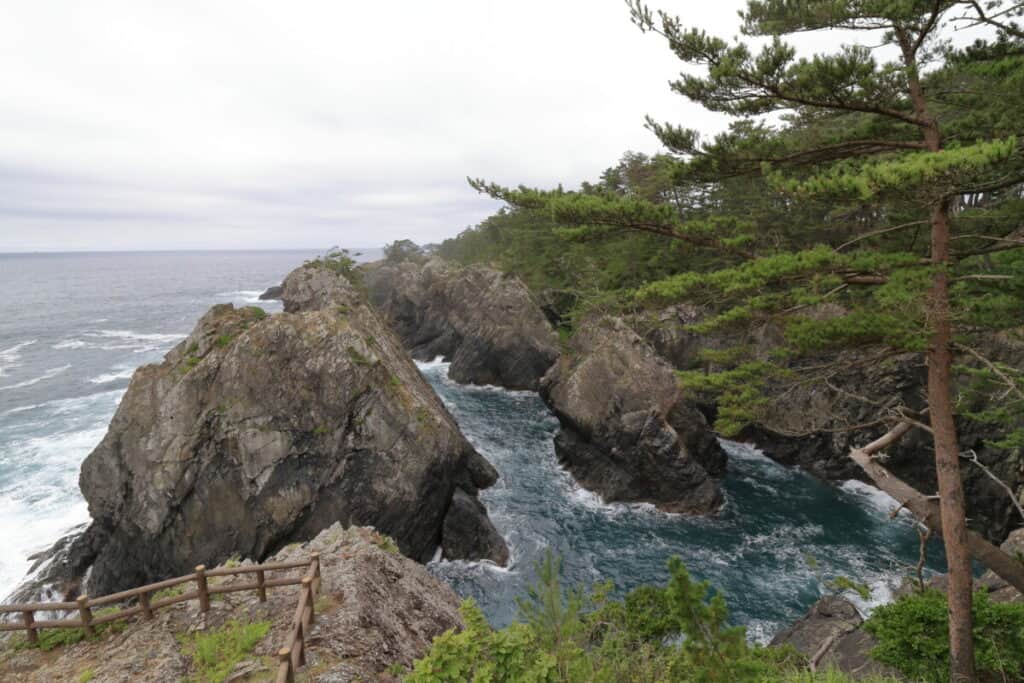
Japan’s Iwate Prefecture
Iwate Prefecture (岩手県) sits nestled in the Tōhoku region of Honshu. Covering a total of 5,898 square miles (15,275 square kilometers), it’s Japan’s second-largest prefecture.
Three other prefectures border the area: Aomori (north), Akita (west), and Miyagi (south). The Pacific Ocean sits to the east.
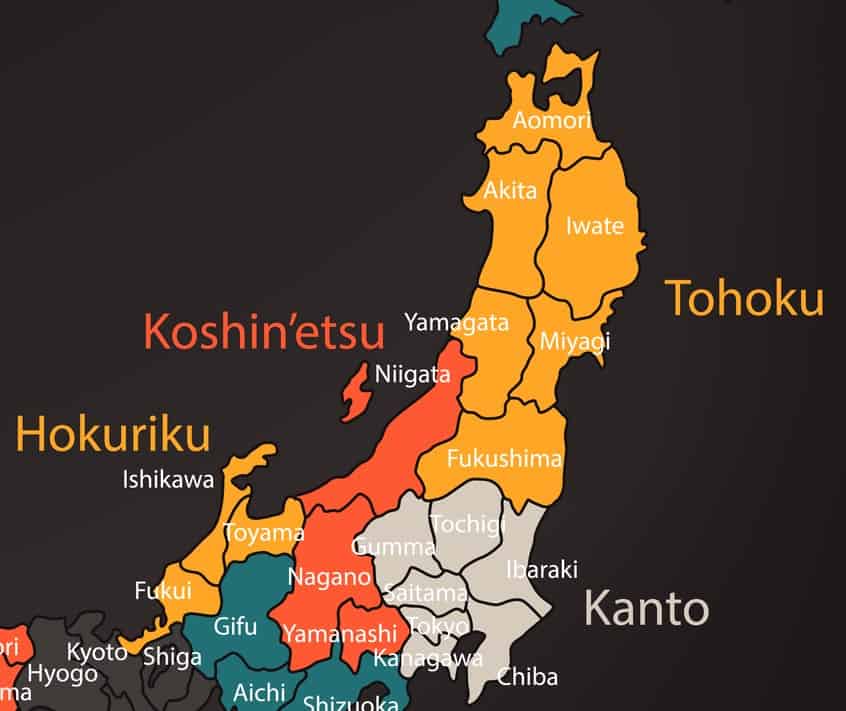
Two Mountain Ranges
On the west side of Iwate are the Ōu Mountains. Not only is this the longest mountain range in Japan, but it’s also home to several active volcanoes. Mount Iwate and Mount Kurikoma are two of these.
Another mountain range runs directly in the middle of Iwate, the Kitakami Mountains, and it runs from north to south. These aren’t active volcanoes but Mount Hayachine nestles in the heart of the mountain range.
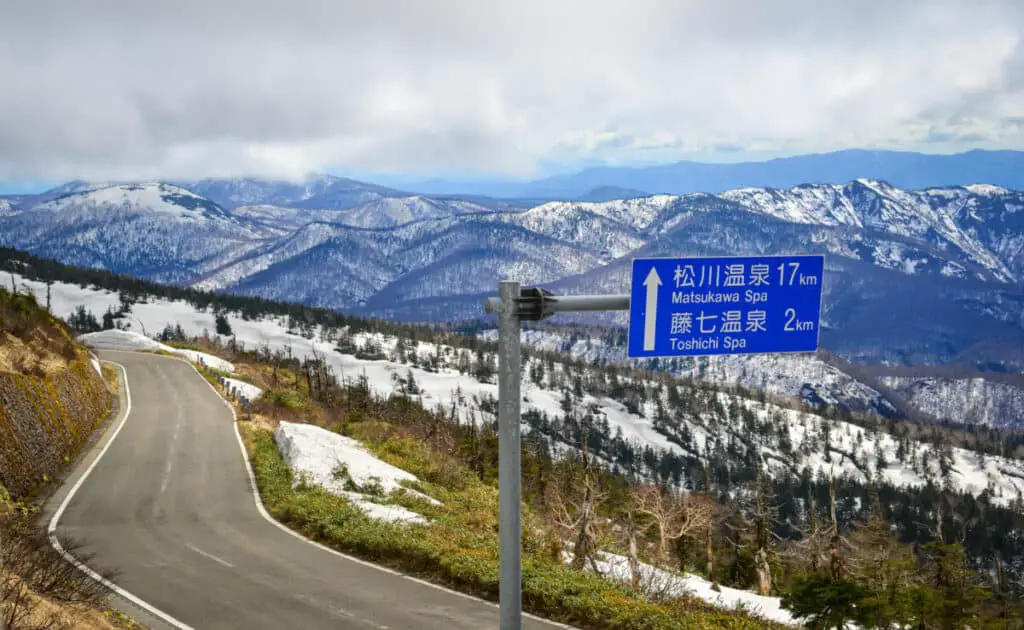
Waters And Its Forests
Between these two mountain ranges flows the Kitakami River, also traveling from north to south. It’s Japan’s fourth longest and has a large, fertile basin.
This gives the right amount of room for the prefecture’s cities, farms, and industries. All this water and scenic views produce the popular public onsen or hot springs.
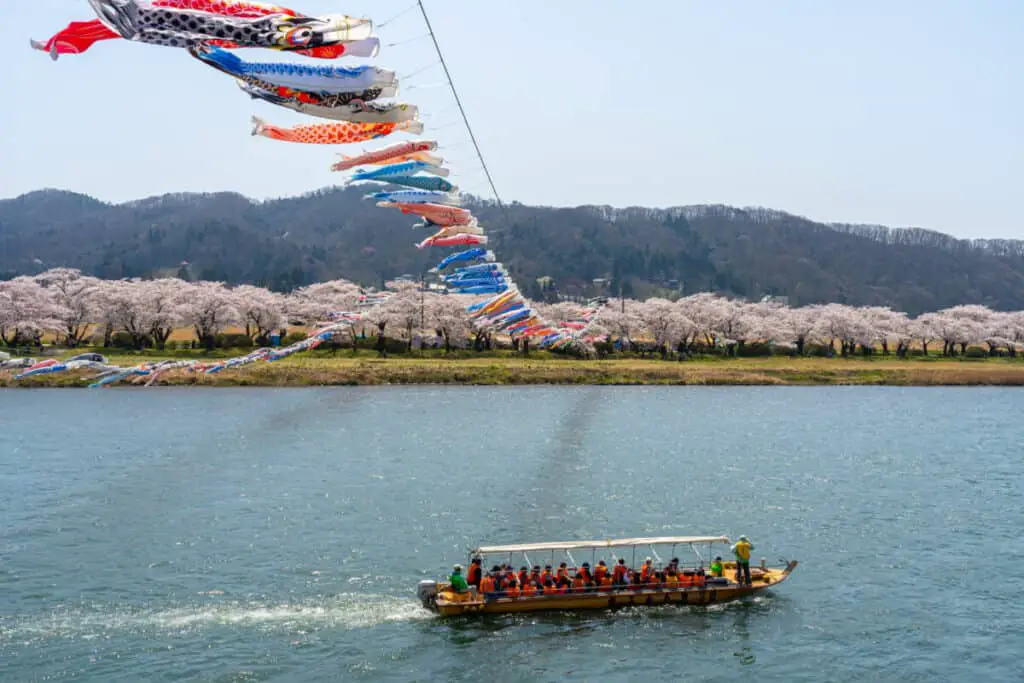
Another valuable resource to the Iwate Prefecture is the plentitudes of pristine, wild forests. Before World War II, they mostly contained beech trees. But, due to the demand for Japanese cedar, that is now what has been planted in these forests.
About the name, “Iwate”
There are many theories and legends surrounding the name, “Iwate.” But, the most commonly accepted one is a tale called, “Oni no Tegata.”
This involves the “Three Rocks Shrine” located in Morioka called “Mitsuishi.” Legend has it that an eruption from Mount Iwate threw down three rocks into Morioka.
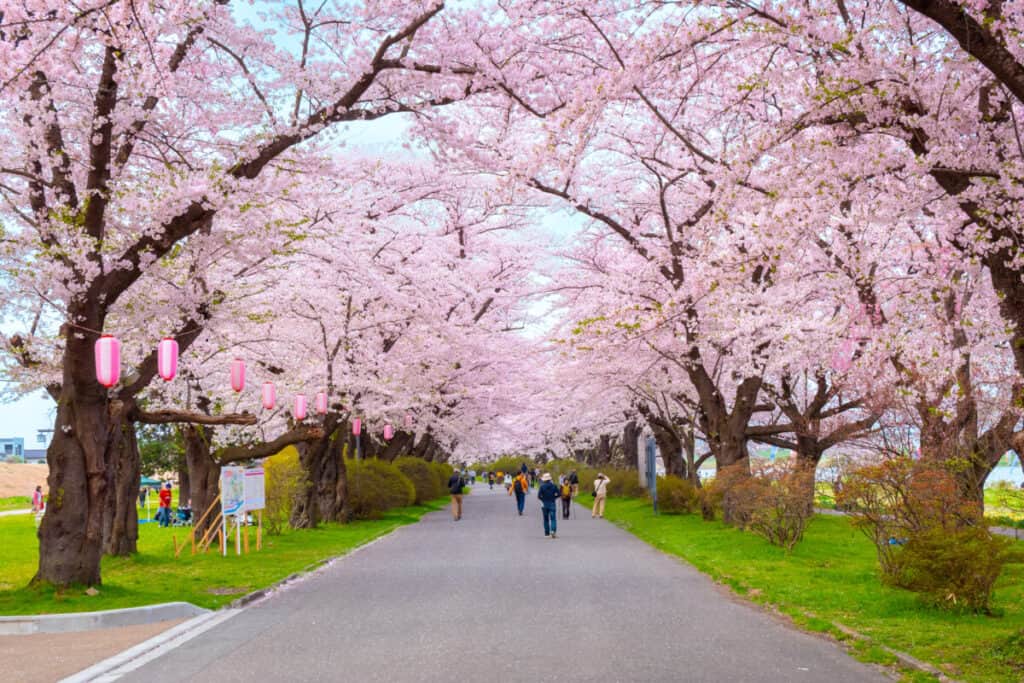
This is significant because the tale indicates that a devil often harassed and tormented the locals. When the people prayed to be free of this devil, the spirits chained it to these three rocks with the promise to never bother the people again.
The devil left his handprint on one of the rocks as a seal of his oath and token of his promise. Therefore, “Iwate” translates to “rock hand” which is visible after a heavy rainfall, even to this day.
Morioka: Iwate’s Capital City
Morioka (盛岡) is the capital city of the Prefecture and is the largest city in Iwate. It’s just north of Tokyo that takes about 2½ hours to reach by train.
The various rivers that dot the mountains surround three sides of the city. While nature is a desirable attraction, Morioka is also famous for being a hub of transportation and recreation.
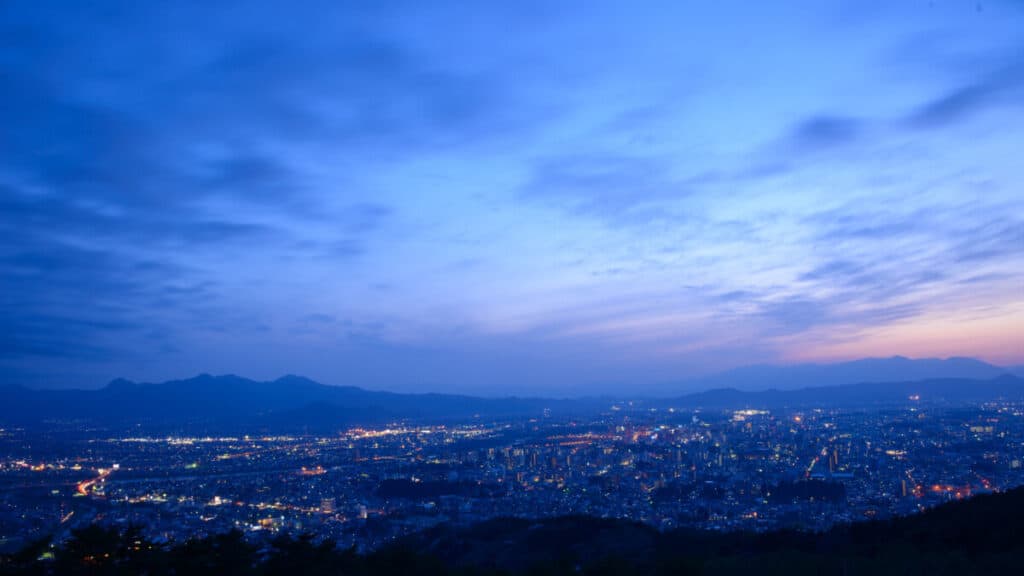
Cherry Blossom Trees
Not only is it a great recreational spot but it also has some of the best cherry blossom viewing. There are 200 cherry trees strewn about the park along with around 100 plum trees.
A short jaunt away from the park is a 400-year-old cherry tree growing out of a granite boulder before the Morioka Courthouse.
Morioka Castle
Another attraction in the city is the Morioka Castle Ruins Park. This is the spot where the Morioka Castle once stood.
Demolished and left in ruins in 1874, it saw a cleanup operation in 1906 gaining a new name, “Iwate Park.” The only thing that remains of the castle is its stone walls.
Iwate Park also has a museum of the region’s history and culture along with a small shrine.
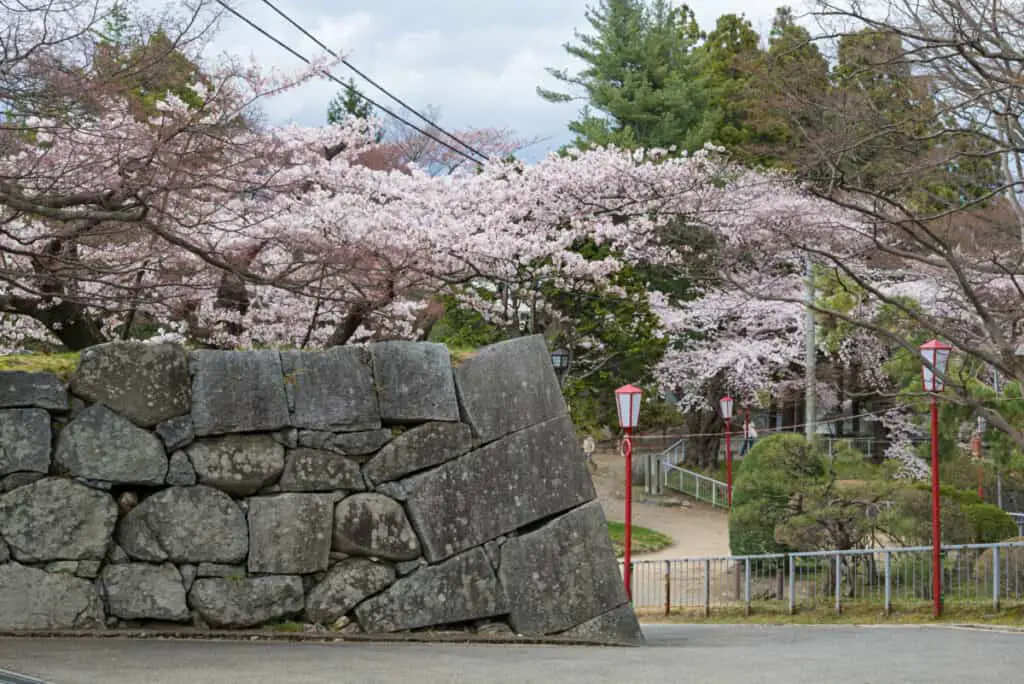
Other Cities, Towns And Villages
Iwate is home to 14 major cities along with quaint villages and vibrant towns that have several desirable and beautiful attractions. Some of the more notable places are:
- Ichinoseki contains Japanese singing gondoliers and several natural scenic views
- Hanamaki is famous for its hot spring resorts and yearly festivals that include traditional dances
- Ōshū is home to a theme park and outdoor movie theater
- Hiraizumi has two famous Buddhis temples: Chūson-ji and Mōtsū-ji
Iwate Food And Its Agriculture
The local cuisine of Iwate is a direct reflection of all that the earth and ocean provide. Farmers take great pride and care in their work, utilizing the best organic farming and animal-raising practices.
Just 9 miles west of Morioka is Koiwai Farm. It’s one of the country’s oldest and most well-known dairy farms.
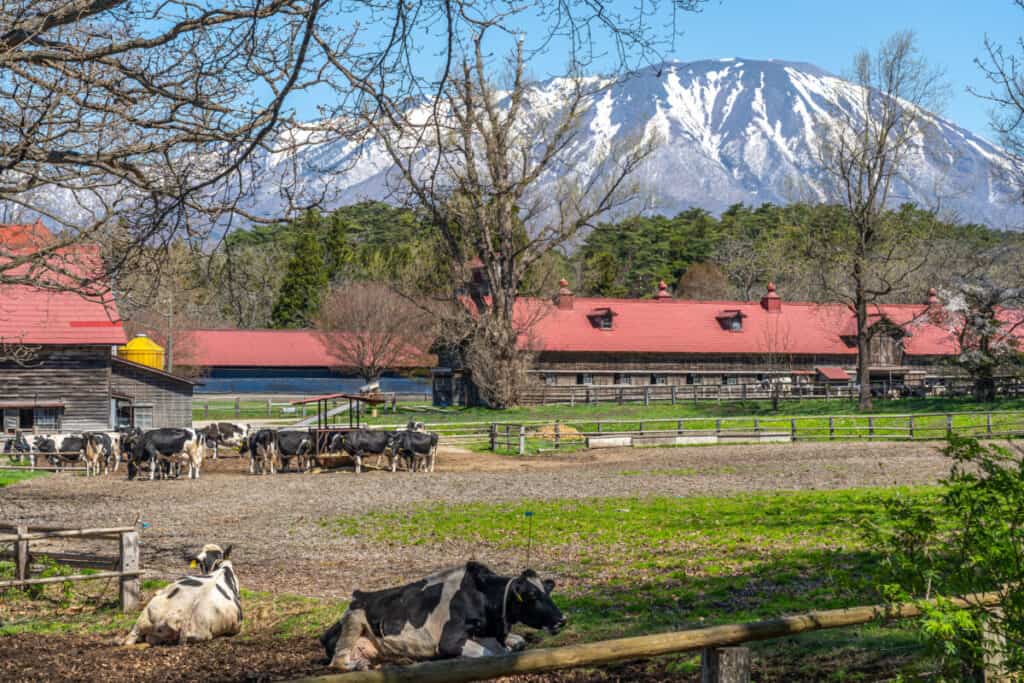
This results in Iwate being famous for its wagyu beef, walnuts, apples, oysters, and luxurious rice. But, they have one particular specialty above all these . . . and that’s noodles!
Noodles are Their Specialty
The locals have a special method for preparing certain noodles called “hittsumi-jiru.” This translates to “pull and tear.” It refers to the way in which a chef tears and pulls at a wad of dough, which turns into ovals before transforming into noodles.
This place is so famous for its plentitude of noodle dishes that it comes with a legendary sobriquet: “Three Great Noodles of Morioka.” These are Jajamen, Reimen and Wanko Soba.
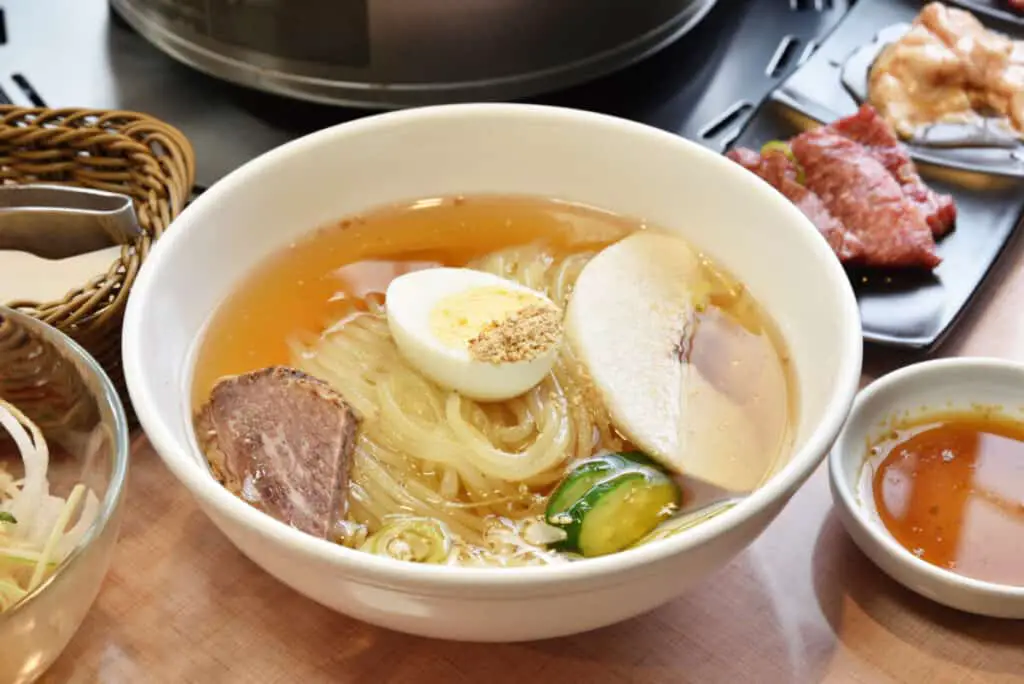
Jajamen
Originating in China, Jajamen is a dish all its own in Morioka. These are a variation of udon noodles but they come dry with a helping of meat miso, green onion, cucumber, and ginger on the side. The diner then mixes the noodles and miso to their liking.
It’s common for people to add things like garlic, chili oil, or vinegar to their preferences. Some people will even top it off with a raw egg.
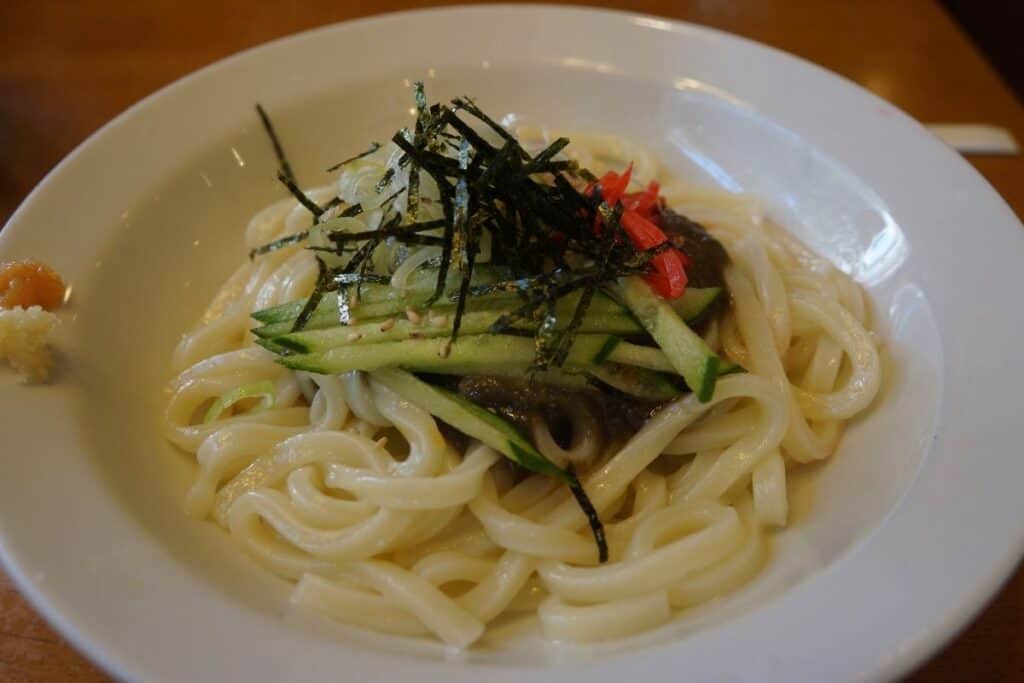
Reimen
Said to be the creation of a Morioka resident from North Korea, Reimen is a cold noodle dish popular in summer. They comprise potato starch and wheat flour, which give it a glossy sheen.
It comes with toppings such as kimchi, pear slices, apple slices, ½ hard-boiled egg, meat, and cucumbers.
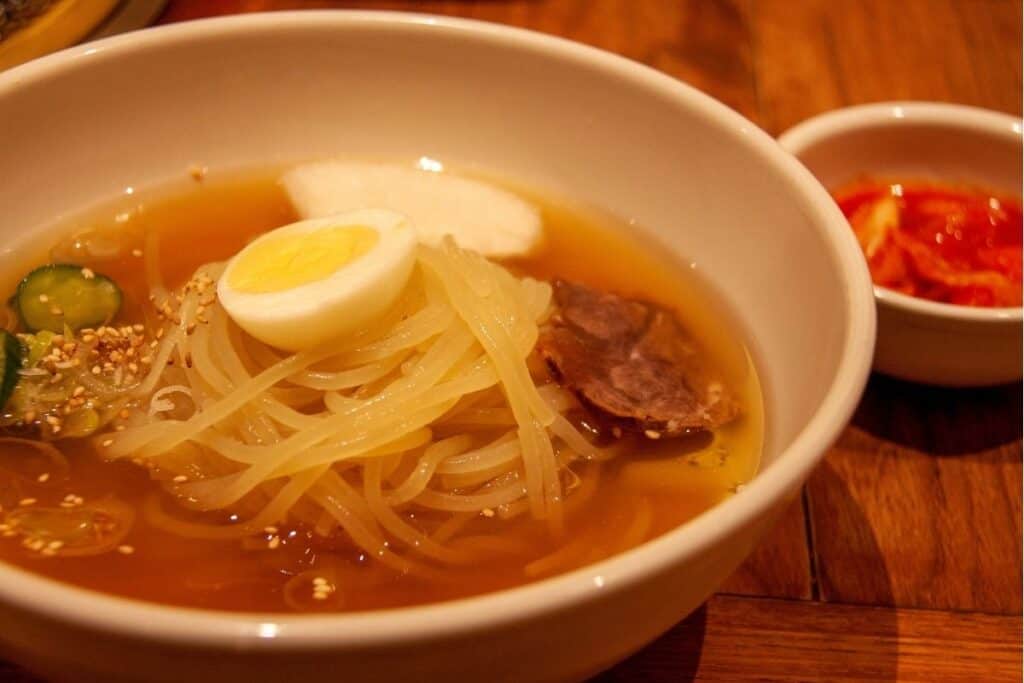
Wanko Soba
Wanko Soba is the infamous Japanese dish where the server will continually pour noodles into your small bowl until you’ve had your fill. The whole journey of eating this is an adventure in and of itself. You eat the first bowl plain so you can savor the flavor. Toppings come with the second bowl.
Each bowl thereafter comes with a variation of topping or condiments that increases the experience of the soba noodles.
In all, people end up eating several dozen bowls by the time they’ve finished dining. On average, men slurp down about 50 to 60 bowls and women consume 30 to 40 bowls.
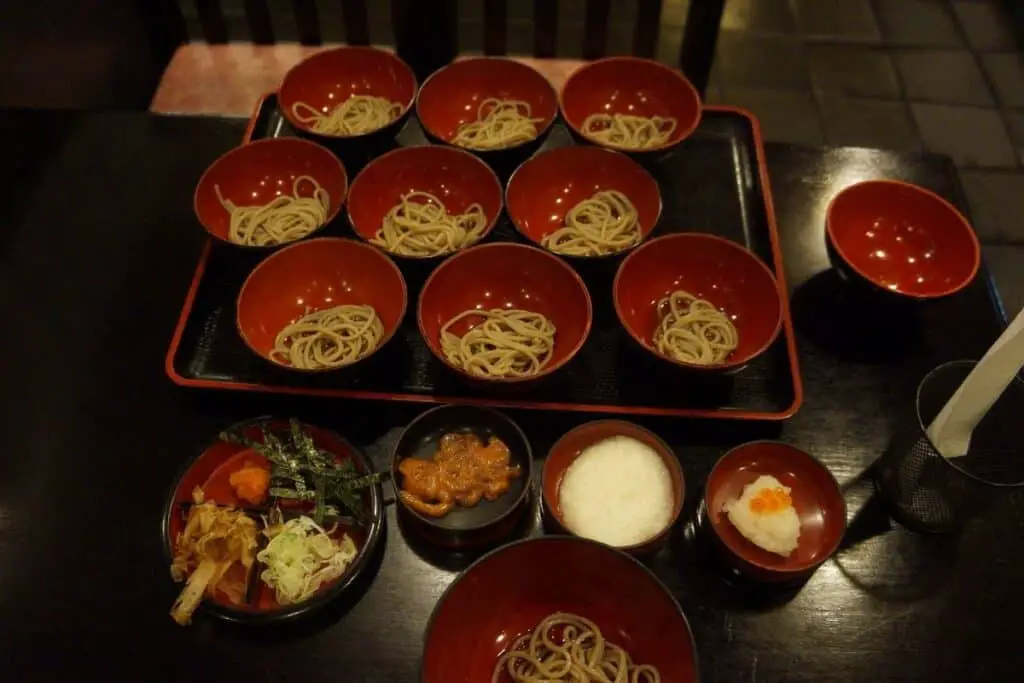
A Rich Past And Iwate’s History
Until the 1870s, Iwate was under the domain of samurai families. Therefore, the historic ambiance of the place is obvious and distinct.
Before the Japanese government’s claim of the area, the Jōmon people left their mark throughout the prefecture.
Ancient Burial Sites
There are a number of burial sites from 2,800 to 1,900 BC in Nishida. In Tateishi, Makumae and Hatten have clay figurines from 1,900 to 1,300 BC. Kitakami contains tools, tablets, and swords along with clay figures, pottery shards, and even earrings.
Tribal Presence before Japanese Arrival
The earliest known Japanese presence is around 630 AD. This is around the same time that historians claim the Hakusan Shrine’s construction occurred on Mount Kanzan (now Hiraizumi). Traders, adventurers, hunters, criminals, and priests all came here.
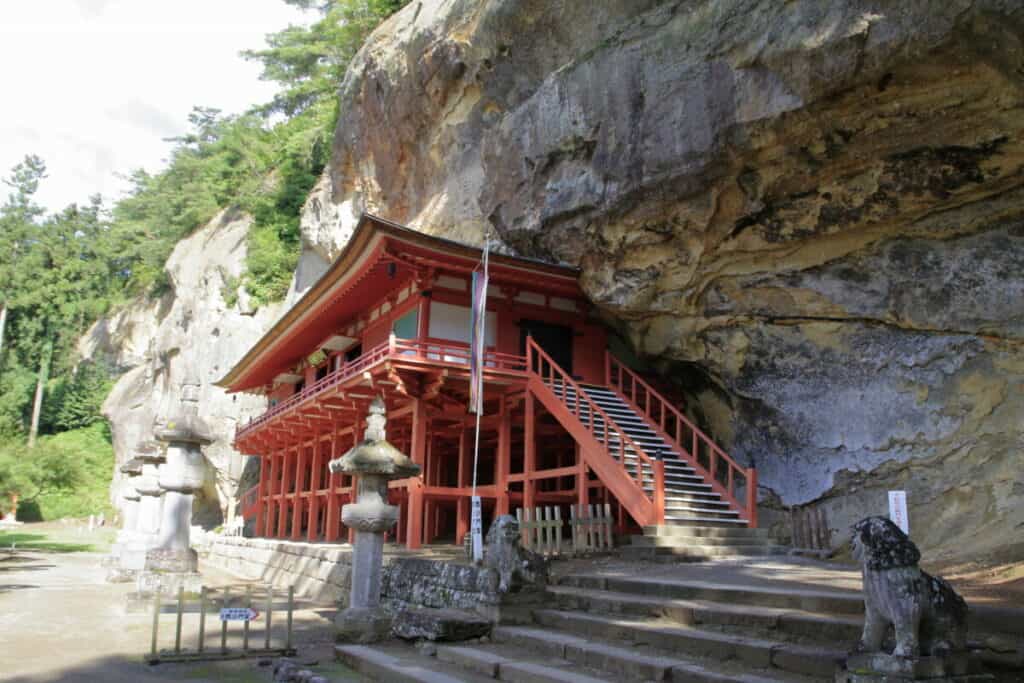
Old Buddhist Temples
Less than 100 years later, the itinerant priest, Gyōki, erected the Kokuseki-ji Temple in Oshu City (now Mizusawa Ward).
The interesting thing about this aspect of history is that no one knows many details about the relationship between the Japanese and the inhabiting natives of the area.
Japanese Invasions
But, in 776 AD, Japanese forces invaded, attacking the Isawa and Shiwa tribes. Over many years of fighting, coercion, and other campaigns, the Japanese government won control of the region in 802 AD. This came on the back of the surrender of tribal leaders.
That same year and up to 812 AD, numerous forts sprouted up along the Kitakami River, based on Chinese models. Then, until the Meiji Restoration, the region was part of the Mutsu Province. It wasn’t until 1876 that the Iwate Prefecture came to be.

